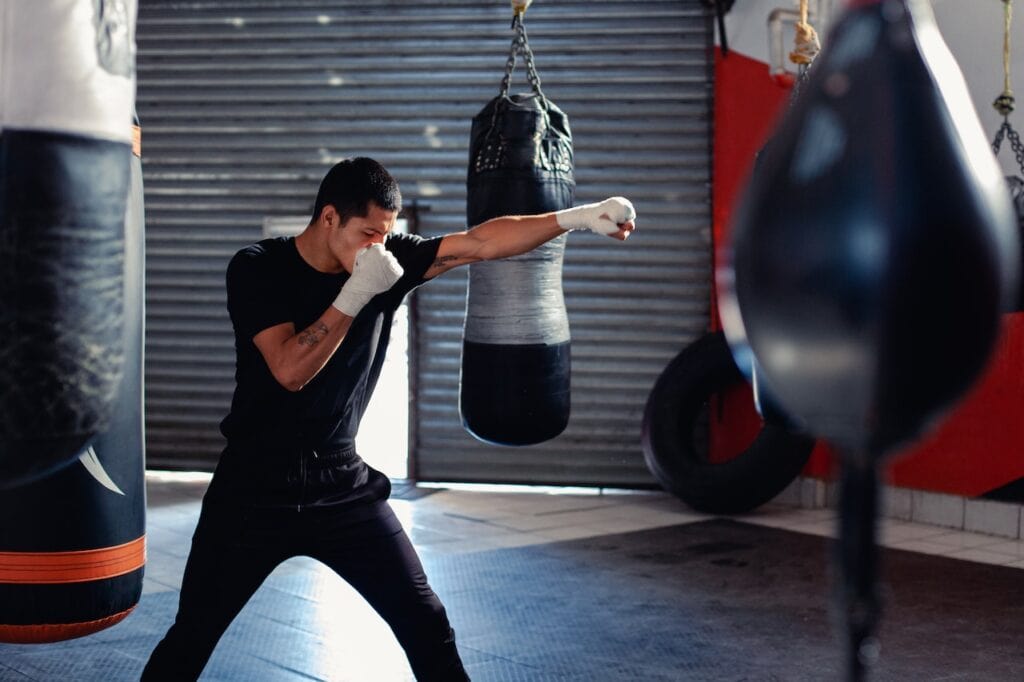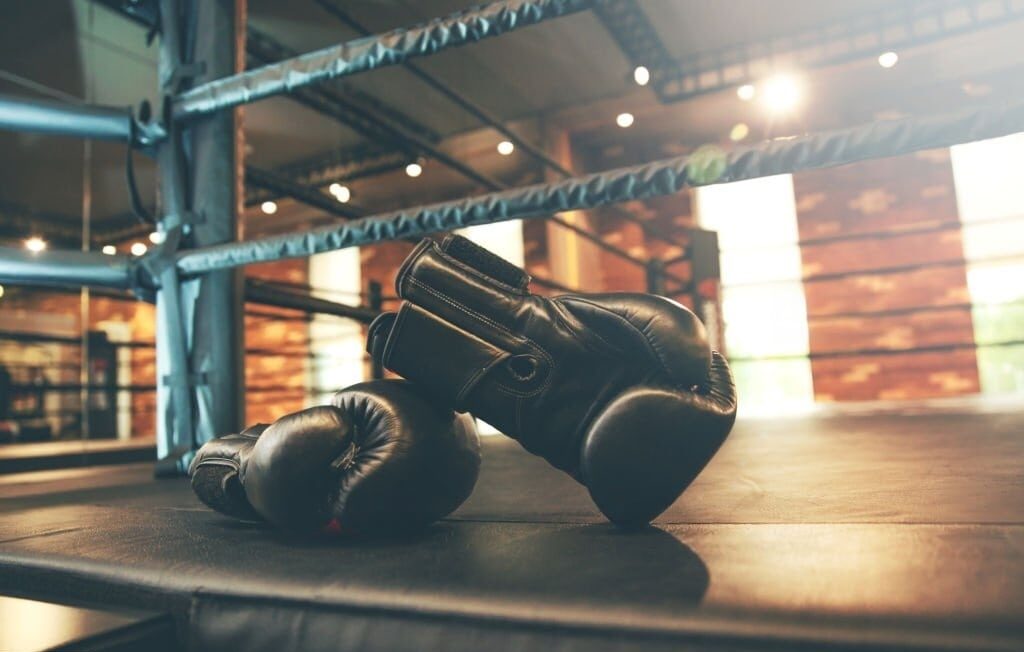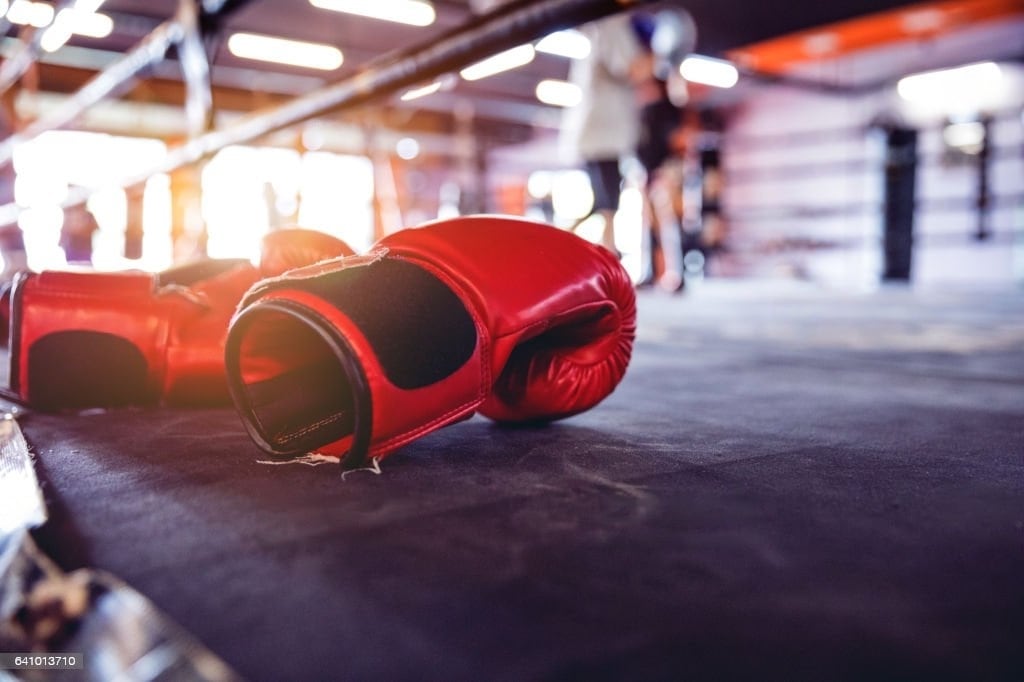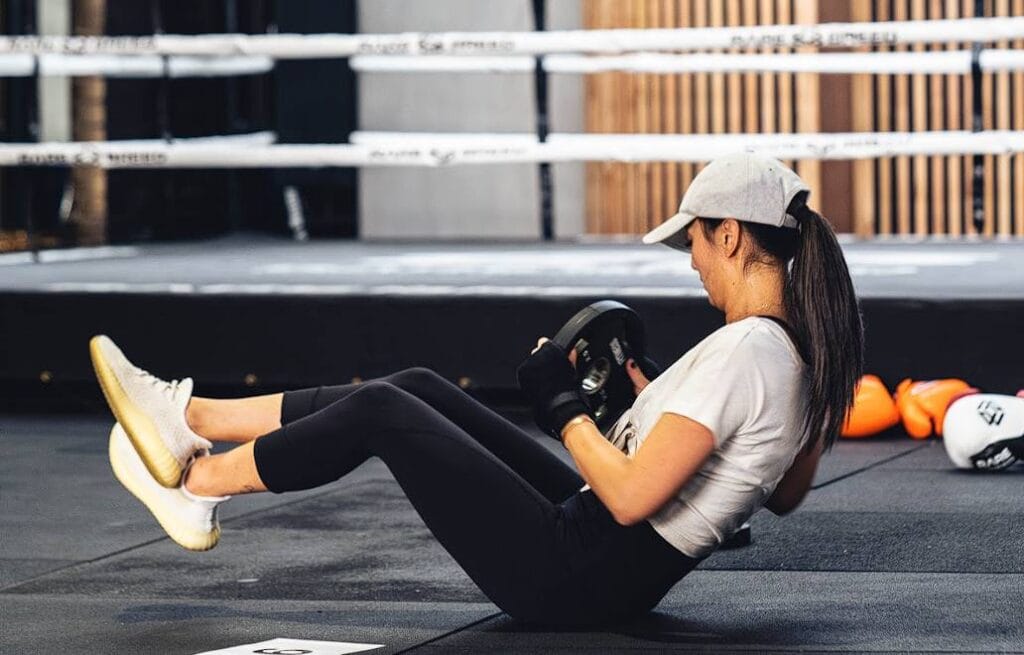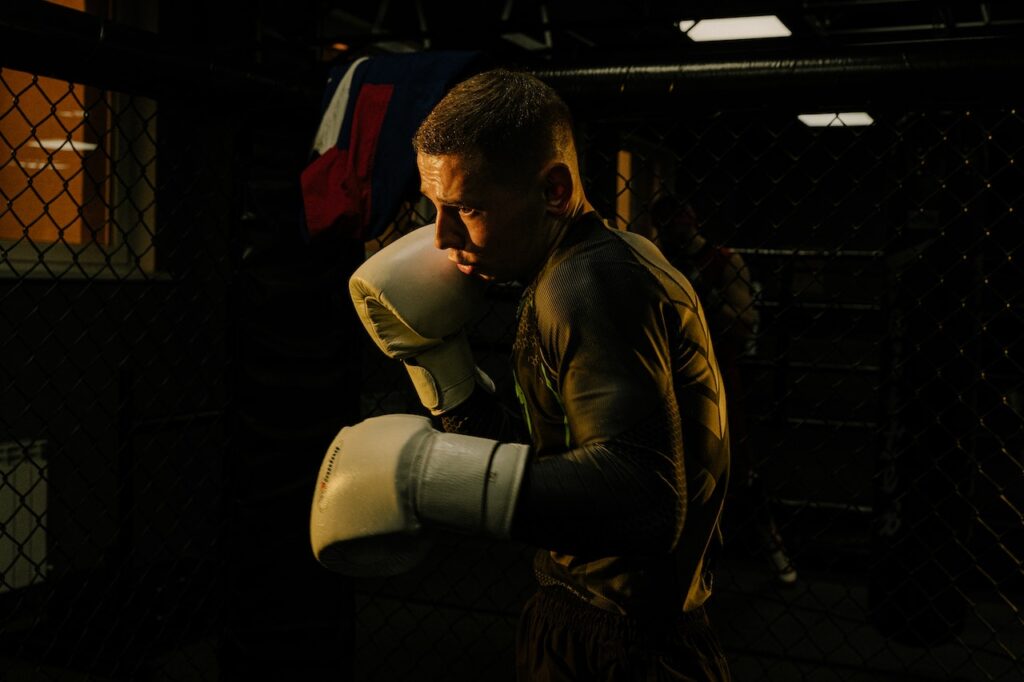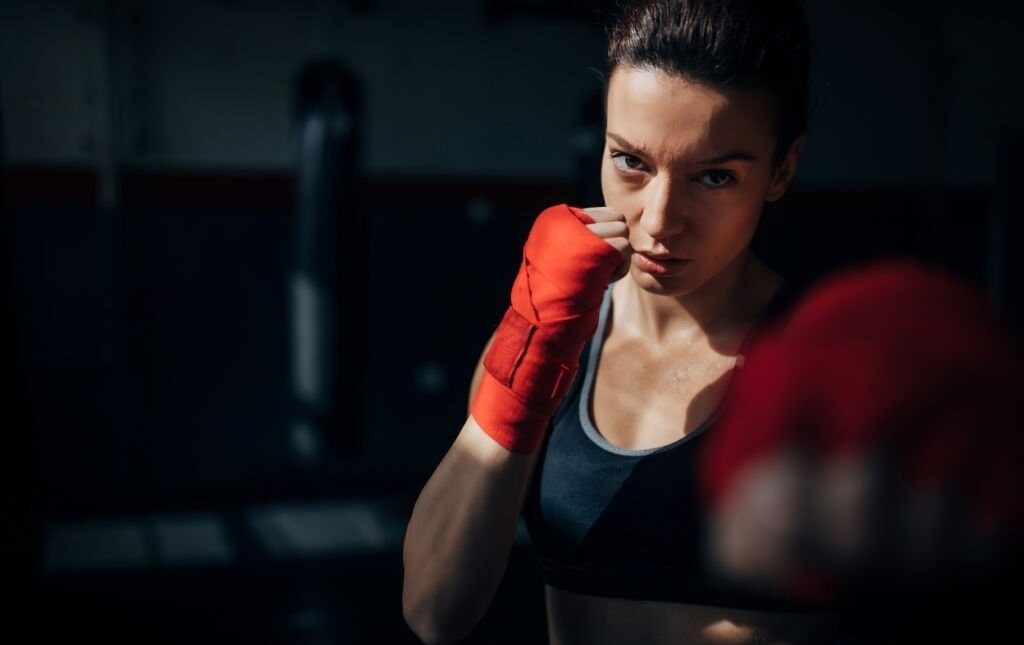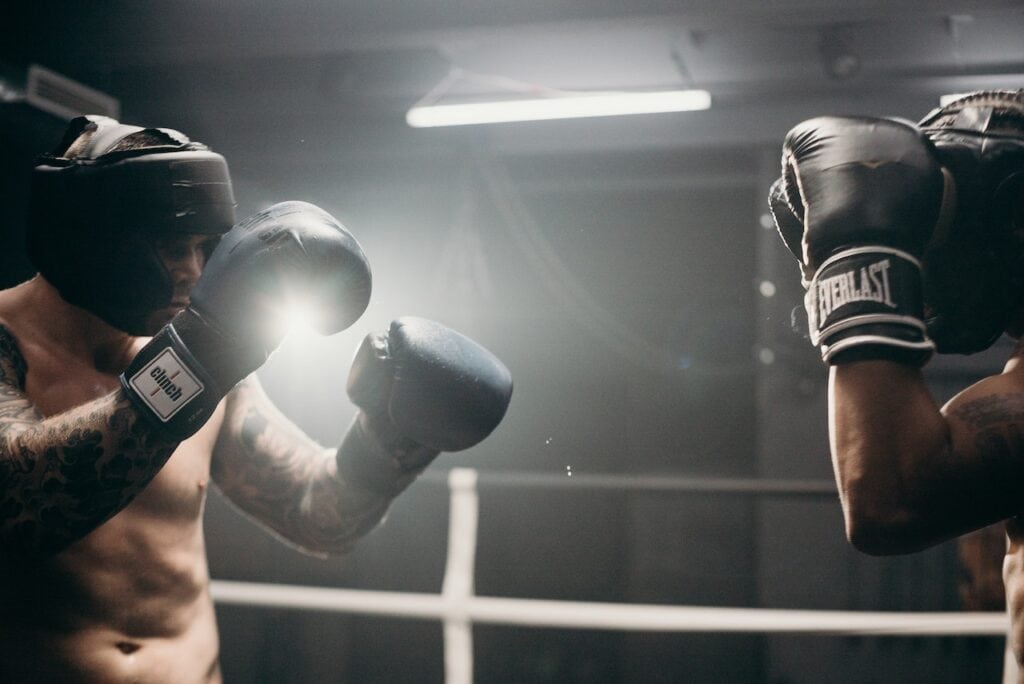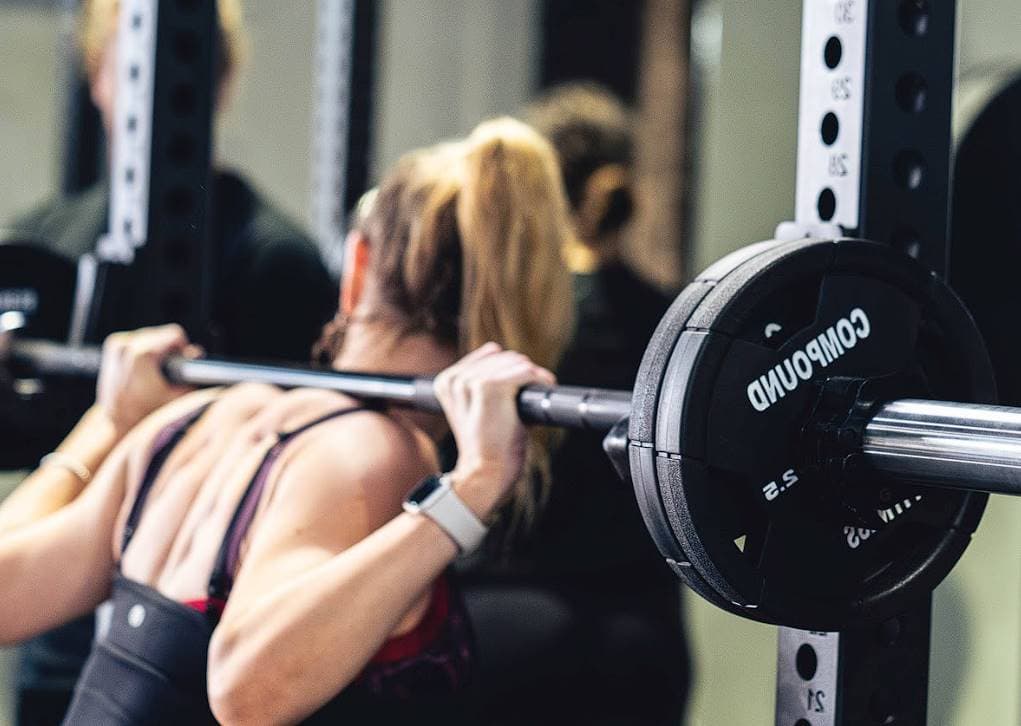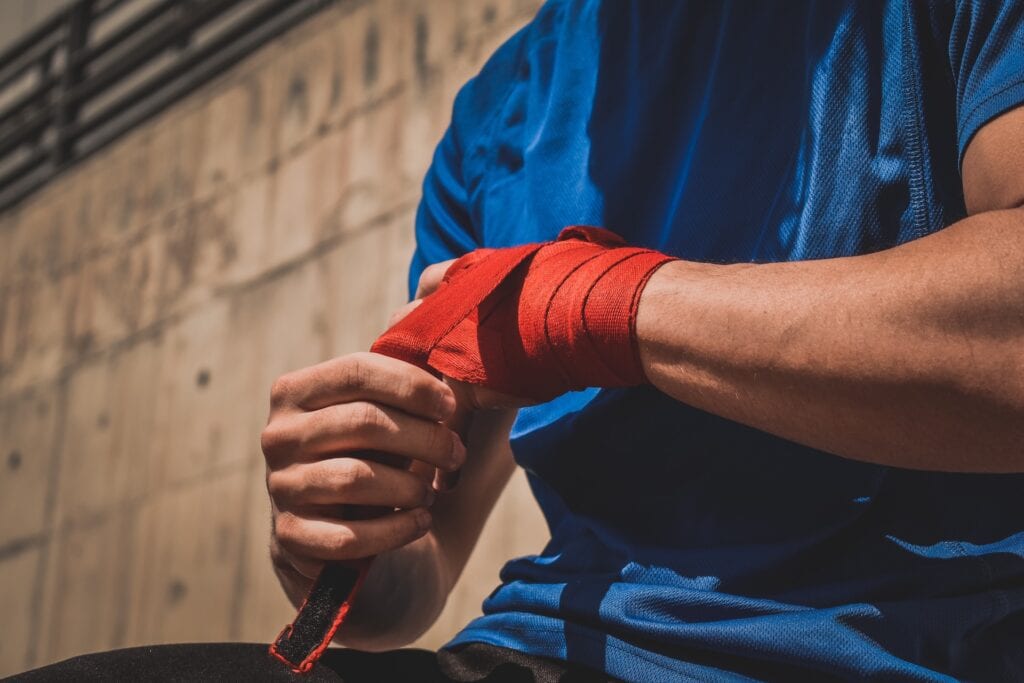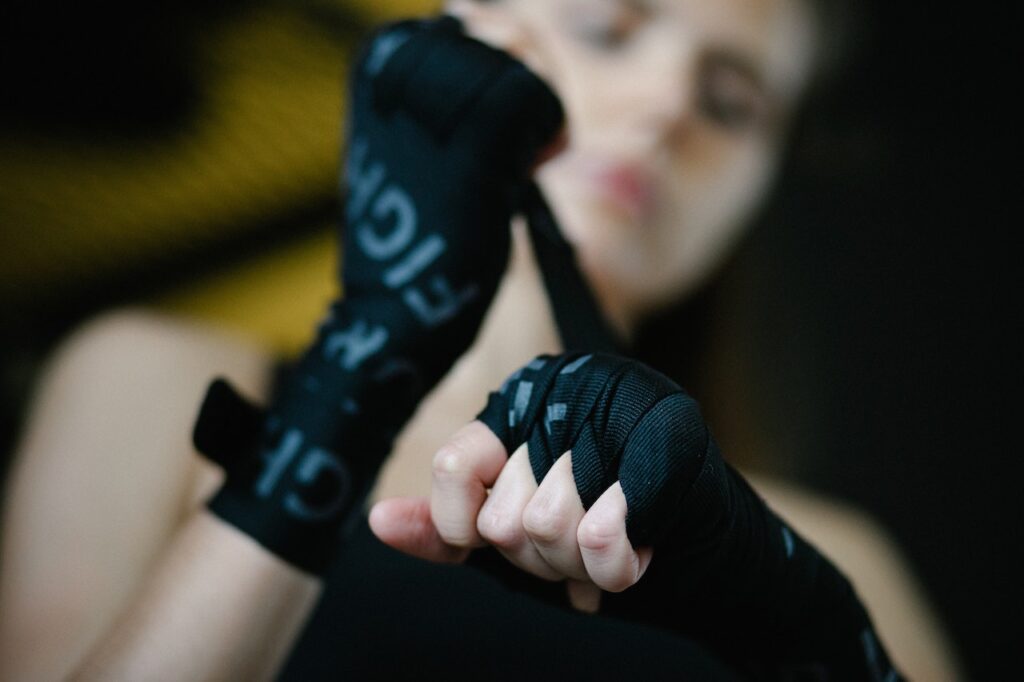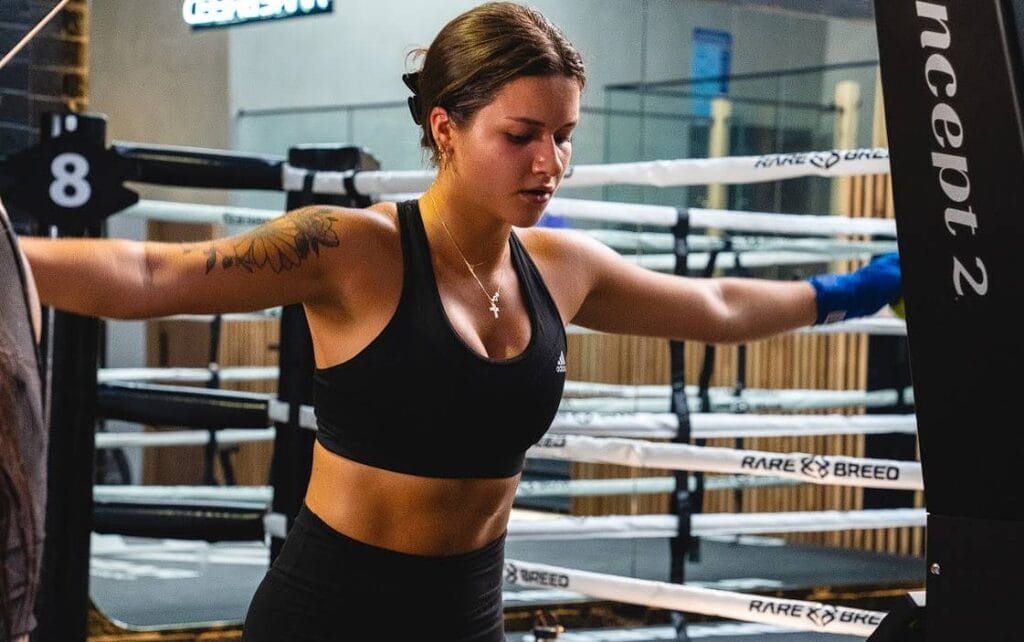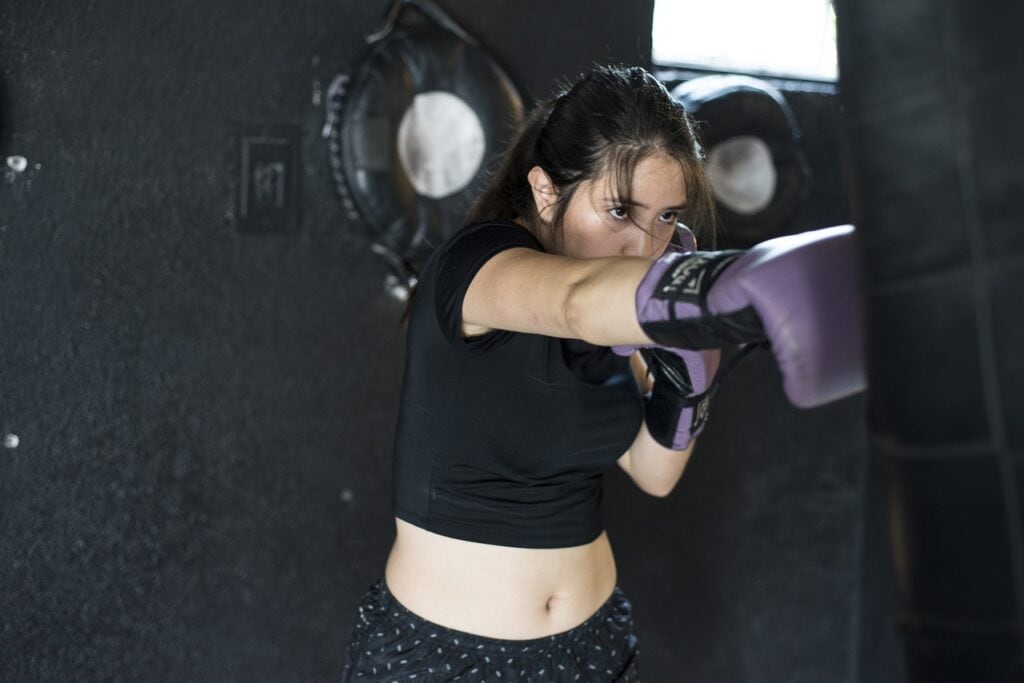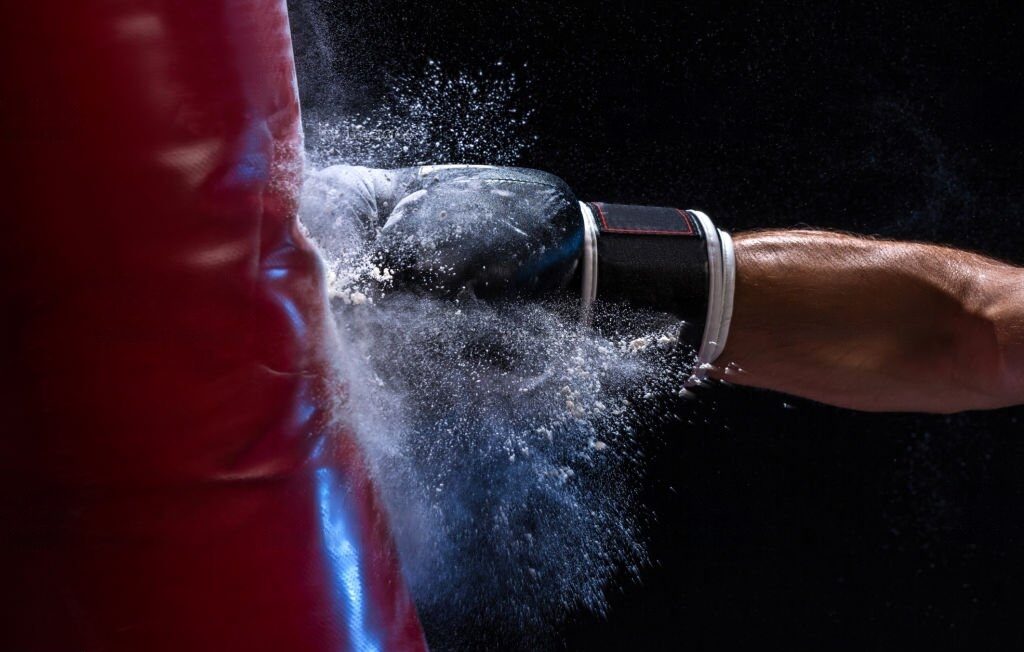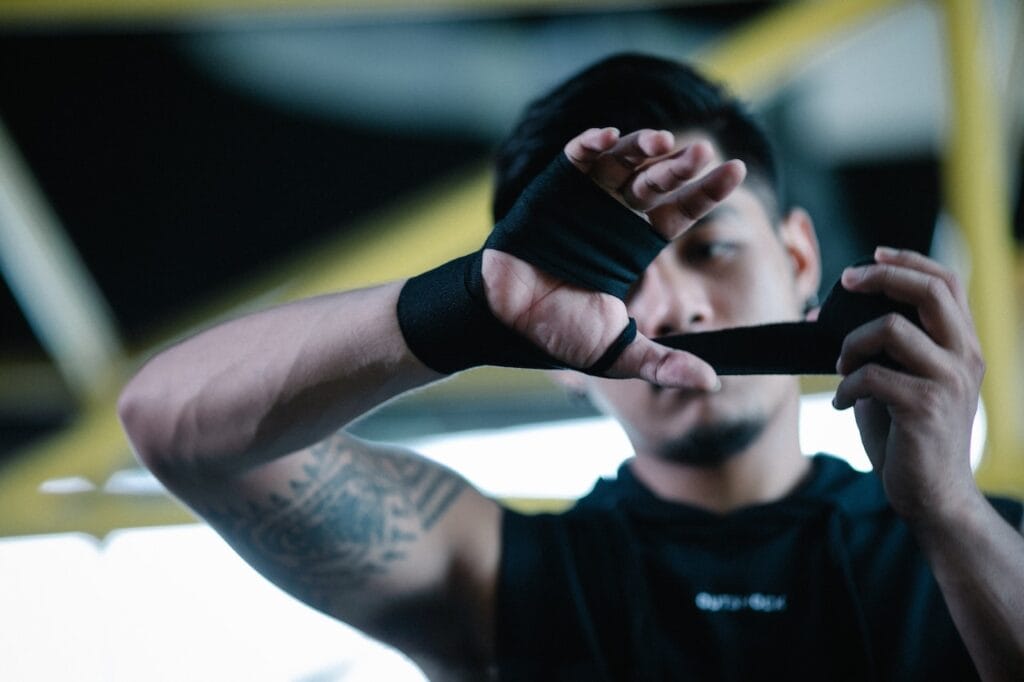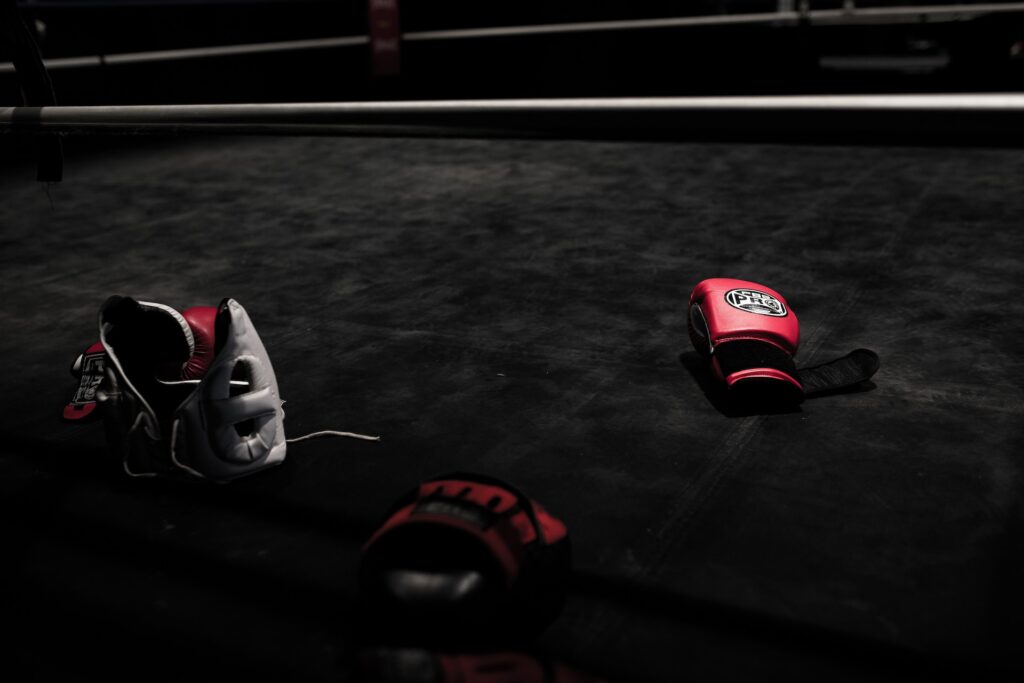You need to be familiar with maximal punching combos to broaden your boxing punches technique repertoire and advance to the next level in your boxing punches technique. In addition to that, you need to be aware of how to put them into action.
Employ them whenever you want to catch the opponent off guard or whenever they appear like good finishers. It is the ideal method to use them. You should add the following fundamental boxing combinations to your toolbox because they are easy to learn but very powerful.
Do you want to become a better boxer and feel more confident when entering the ring? If this is the case, it is essential to become skilled in boxing combos. You can get an advantage in a fight by opening up gaps in your adversary's defence with the help of these.
The problem is that many boxing combinations are very sophisticated and challenging for someone just starting to learn. But, to our great relief, we have uncovered several incredible fundamental boxing combinations that, despite their potency, are surprisingly simple to master. So, let's start this party by looking at the definition of a boxing combo.
Boxing 101: 3-Punch Combos
WHAT EXACTLY IS A BOXING COMBO?
A boxing combo is a series of punches and movements that you execute to attack or counter your opponent. Combos are a staple of the sport.
One definition of a successful boxing combo is one in which the boxer can:
- Achieve your goals.
- Protect yourself from any potential opponent counterattacks as quickly as possible.
- Get as far away as possible from your rival.
The following is an explanation of the punch count number system:
1 = Jab
2 = Cross
3 = Lead Hook
4 = Rear Hook
5 = Lead Uppercut
6 = Rear Uppercut
Note: You might see numbers in certain boxing workouts to signify the different drills and rounds. If this is the case, pay attention. These are the punches that go along with the individual drills.
WHAT ARE SOME OF THE BEST 3-PUNCH BOXING COMBOS?
Suppose only 36 different two-punch combinations can be performed (the best of which were discussed in the previous article). In that case, 216 different three-punch combinations can be performed without any variance caused by movement (not counting added slips, pivots, ducking, etc.). This section will concentrate on learning the most practical and adaptable skills.
Several things to keep in mind while you are putting in work are as follows:
- At the beginning of each combo, you should have a bit of your weight on your back foot.
- You can throw your punches either statically or with a step as you do so. In this article, we will provide step-by-step instructions for the combinations.
For instance, if you toss with a step, twice shooting with the same hand might require two steps (front footsteps, back foot catches up; repeat).
- It is possible to advance one step by switching hands between punches (the front foot moves together with the first punch; the back foot catches up with the second punch).
- If you are frequently off-balance between punches, you should train very slowly to identify the source of the issue and learn how to fix it.
- Be careful not to let your guard slip in the middle of the combo; your chin should always be covered by one hand, and you should bring the hand that punched back into your guard as quickly as possible after the punch.
- Make an effort to mix up your targets.
For example, if you have a jab in your combo, you should throw it once to the body, and then the second time, you should throw it to the head.
- Always complete the combination while maintaining the correct boxing posture.
LEADING WITH THE JAB
The jab is the most important punch. It sets up your combinations.
The 1-2-3
The jab is the most vital part of your punching arsenal. It sets the groundwork for your combinations.
One of the first three-punch combinations that most people learn is this one. If your opponent still needs to cover up after the jab, they should be more anxious about shots coming straight forward after the cross, which may leave their chin exposed on the side for the lead hook. The reasoning behind it is as follows:
- How to carry it out:
- To begin, transfer your weight so it is more concentrated on your rear foot.
- Jab
As you prolong the jab, step forward with your foot in front.
- Cross
As soon as your jab returns to the guard, it would help if you began extending your cross.
You stretch the cross while pivoting into the shot as your back leg catches up with the front step. It allows you to take the shot.
- The Hook That Leads
Make a pivot on your front foot rather than taking a step with it, then attempt to perform the hook move without moving your feet.
- Restate yourself in your position.
It would help if you made it a goal to close the gap between you and your opponent with the first two shots you take so that you may execute the hook without taking any additional steps.
Try throwing the cross to your opponent's body and coming on top with the hook if their head is too well-protected.
The 1-1-2
A double jab, then a cross, is the next move.
- To begin, transfer your weight such that it is more concentrated on your rear foot
- Deliver the uppercut.
Proceed forward while extending your hand as the leader (front foot first)
As you bring your hand back, your back foot catches up to where it should be.
- Before bringing your leading hand back to your guard halfway, rapidly throw a second jab with it before you finish bringing it back.
Make one more step in the right direction.
- Cross
As soon as your jab returns to the guard, it would help if you began extending your cross.
At the same time as you stretch the cross and pivot into the shot, your back leg catches up with the front step, and you pivot into the shot.
- Restate yourself in your position.
Try to make your front foot step forward and a tiny bit to the side when you throw your second jab (for an orthodox stance, that means front and left; for a southpaw stance, that means front and right). Because of this, the cross that comes after it will be able to provide greater power because your upper body will have more room to rotate.
Throwing the cross as an overhand (to the right or left, depending on your stance) is a common and commonplace small variation. It indicates that the cross is less straight and that the action has an arc to it; as a result, it can go over your opponent's guard and land on top of their head.
You are free to substitute any other punch for the final strike that follows immediately after a jab whenever it occurs. Be inventive and try varying this punch combo with different shots; for example, maybe the 1-1-6 (Jab-Jab-Rear Uppercut) will be something that comes very naturally and easily to you, or maybe the 1-1-4 (Jab-Jab-Cross) would be something that you find very effective (Jab - Jab - Rear Hook).
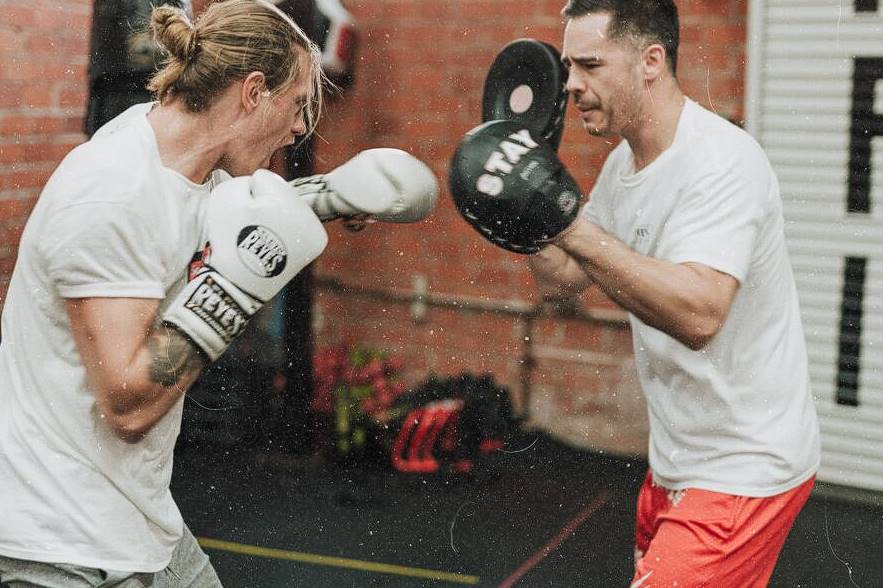
The 1-2-Pull-2
When you attempt to land a punch after a 1-2, but your opponent keeps countering before the third shot, you can utilise this combo to neutralise the counter and land the punch instead:
- To begin, transfer your weight so it is more concentrated on your rear foot.
- Jab
As you prolong the jab, step forward with your foot in front.
- Cross
As soon as your jab returns to the guard, it would help if you began extending your cross.
At the same time as you stretch the cross and pivot into the shot, your back leg catches up with the front step, and you pivot into the shot.
- Take a step back
Following the cross, you should have a bit of your weight on the front foot. Use this as a lever to get off the front foot, and as you bring your back hand back to guard, take a stride backward.
- Cross
You can throw it like a lead cross while taking a modest stride or none at all ahead.
- Restate yourself in your position.
The pullback almost puts you back in the stance, but the torque that your upper body generates when you start with an extended backhand will make it simpler for you to throw the backhand again to finish.
The attack you are avoiding is likely a cross (or even a jab), making the back hook a poor reply. You should experiment with the 1-2-pull-6 variation and complete this combo with a rear uppercut. It is the variation that you should try.
The 1-2-Slip-6
To successfully finish off a combo with a rear uppercut, you will need to be in very close proximity to your opponent. This combination is an additional answer to the question that was answered by the 1-2-pull-2 solution.
We throw the 1-2, but instead of pulling back to escape the counter straight shot with a jab, we slip with a step to our back foot and finish off with a lovely six to the chin while the opponent is guarding us. Exactly how to complete this task is as follows:
- To begin, transfer your weight so it is more concentrated on your rear foot.
- Jab
As you prolong the jab, step forward with your foot in front.
- Cross
It would help if you began extending your cross when your jab returns to the guard.
At the same time as you stretch the cross and pivot into the shot, your back leg catches up with the front step, and you pivot into the shot.
- Slip
Put your back foot forward and take a step (on a diagonal - forward and out)
To load yourself up, twist your upper body while holding the slip.
- Rear Uppercut
Deliver the rear uppercut without moving a step, keeping both feet planted on the ground.
- Bring your back foot up to the front.
- Restate yourself in your position.
There are far too many effective combinations that begin with the jab for this topic to be adequately covered, but the following are a few more that you can experiment with:
- 1-3 Body-2
- 1-2-1, but with the feet in a different order each time (so throwing the left hand with a right foot stepping and vice versa)
- 1-6-3
- 1-1-1 (triple jab)
Top 7 Boxing Punching Combinations with Tips and Mistakes
1. Jab-Cross (1-2)
The jab-right cross combination is the first one that students in boxing classes learn how to combine. When your opponent moves closer to you while you are still on the outside, you can use it easily to defend yourself. You can also use this when you are standing in your pocket.
Boxing's jab is one of the sport's most important weapons because of its versatility in terms of how it can be used to set up the cross and other strong punches. This combination is fantastic for creating distractions, blinding opponents, and getting into a comfortable range to deliver knockout blows.
Your opponent may become vulnerable after being hit with a quick jab, and a well-placed cross may force them to the ground. If you can master this combo, it will be essential to your success in battle.
Execution
The following instructions can be of assistance to you in executing this punching combo to perfection:
- First, put more weight on your rear foot to get started.
- Jab it.
- Your jab will be more effective if you move your leading foot forward.
- When your jab returns to the guard, stretch your cross. You can then finish the combination.
- You must bring your back leg up to the same level as your front foot and pivot into the shot while maintaining concentration on extending the cross.
- Take a few steps back into your position.
We will only need to take one step as we alternate our hands during this striking combination. Therefore, when you are performing this combo, the orthodox position is the one you should use. Because of this, you will have more freedom of rotation in your body, which will assist you in throwing a strong cross.
Some Possible Jab Cross Combos
You have access to a wide variety of 1-2 combinations that you can throw at your opponents, including the ones listed below:
- Two blows to the head with a jab and a cross (1-2)
- A thrust to the head, followed by a cross to the body (1-2b)
- The body with a jab, then the head with a cross (1b-2)
- The jab and the cross both connect with the body (1b-2b)
2. Jab-Jab-Cross (1-1-2)
If you are looking for a technique to throw off your opponent's game plan, the ideal striking combination for you to use is a double jab cross, often known as a 1-1-2. Your opponents will almost always anticipate a 1-2 from you. In this scenario, throwing a double jab cross at them can be an unexpected move on your part.
It is far simpler to close the distance when two jabs are thrown, followed by a cross, instead of throwing one or two combos. Most boxing trainers agree that this particular punching combination is the best and most common.
Execution
- To begin, place your boxing gloves in front of your face with your elbows pointing down. It is the starting position.
- When you are about to punch your opponent, rotate your hips to the side as you extend your lead hand. Remember that the punch you throw should come directly from the level of your chin. In addition to this, ensure that you do not lower your hands after the initial blow.
- Turn your hand such that your knuckles are parallel to the ground as your punch is about to connect with the target. Do this rotation just before your punch.
- As soon as your jab connects, immediately counter the blow and go for another punch, then cross your opponent. Taking this route can help you execute your double jab cross combo in a way that will have a significant impact.
Mistakes To Avoid
If you want to throw a perfect 1-1-2, you must avoid committing any of these typical blunders that many boxers do.
- Transferring Weight to An Excessive Amount
Avoid shifting too much of your weight forward when you are in your primary boxing stance. While you throw this combo at your opponents, keep your weight on your back leg. Your jabs have a chance of missing the target, which will throw off your balance and increase the likelihood that you will be vulnerable to a counterattack.
- Dropping right hand
When they throw a punch, many fighters may drop their right hand. It is a clear signal that you are open to receiving counterpunches and jab-cross strikes to the face.
- Snapping the punch and failing to turn the other hand over.
A significant number of boxers are unable to snap their punch and turn their hands over. Therefore, before you throw a punch, you should always rotate your wrists, turn your hand over, and position your knuckles so that they are parallel to the ground.
3. Jab-Cross-Hook Cross (1-2-3-2)
Another elementary yet significant boxing combination is the jab-cross-hook-cross. It is easy to throw since all you need to do is punch to the left, right, left, and right. You begin by opening up your opponent's defences with a jab, and then you follow that up with three powerful punches: a cross, a left hook, and a cross.
If you can precisely land these three punches, you can defeat any challenger you come up against. When you throw this combination, you must ensure that your first two punches are rapid and that your next two punches are forceful.
Execution
Even if you carry out something as fundamental as this, you still need a strategy. The following is an example of how the 1-2-3-2 can be effectively performed.
Set It Up With A Jab
The jab is a primary punch with a large range and may be an excellent starting point for any combo. Because it will generate holes for the rest of the punches in this combination, the proper approach to use a jab is to throw it straight at the face of the opponent, as this will set the stage for the rest of the punches. You can jab at any part of the body and even fake your opponents to get them to move or drop their guard.
Complete The Combo With A Cross
You have to cap off each punching combo with a cross, including the 1-2-3-2 combo. If you plan to attack your opponent, the most effective strategy would be to end the combo with a right-handed power punch. You can make this combo more effective by adapting it to the current circumstances of the battle by adding additional punches to it if you wish.
4. Cross-Left Hook-Cross (2-3-2)
Most punching combos are long-range and executed while the fighter is far from their opponent. For instance, if your opponent is standing directly in front of you, you won't be able to throw a jab. The cross left hook cross is a wonderful combo that you can use in tight-quarters scenarios like these, and you can use it to make the opponent pay the price for entering your close range.
It is a power-based combo that does not begin with a jab, traditionally used by boxers to test or seek a reaction from their opponent.
Execution
When you throw a hard cross with your right hand, raise your left hand to protect your chin, so you don't get hit by a counterpunch. It will allow you to perfectly execute the punch while protecting yourself from the opponent's counterattack. From this vantage point, you will have the finest possible position to deliver a hook to your opponent's jaw while your hips are loaded.
Always ensure your right hand is in a position where it can shield your face. Immediately following up with a forceful right-hand cross in the aftermath of the hook. It would help if you were physically closer to your opponent to throw this 2-3-2. It will not be successful if you are at a significant distance when you attempt this combo.
5. Jab-Cross-Left Uppercut-Cross (1-2-5-2)
Another powerful punching combination in boxing is the jab-cross left uppercut cross, which may be very effective (1-2-5-2). This combo is similar to the 1-2-3-2 combination, except the left uppercut is used rather than the left hook.
Because it originates from the bottom, using the left uppercut might catch your opponent off guard. If you find your opponent sheltering behind their guard with their head down or charging into you, the left uppercut can assist you in popping their head, and then you can finish them off with a right hand.
Execution
After landing a jab on your opponent, whether to the body or the face, you should immediately follow it up with a quick cross to maximise the effectiveness of this mid-range combo. Following using the cross, you should bend slightly outside of your lead foot to set yourself up for a left uppercut. In addition to that, it ought to be speedy and potent.
Afterwards, rotate your body into a position from which you can throw a cross from above and behind them to land it on the target efficiently. When your opponent is in a high guard stance with their guard up, this is the perfect opportunity to go for this combo.
You will be able to maximise the effectiveness of this 4-punch combo as a result of this.
6. Right Uppercut-Left Hook (6-3)
If you are at a disadvantage because you are standing too close to your opponent and cannot deliver straight blows, combining a right uppercut and a left hook would be a successful strategy. This devastating combo is excellent for teaching adversaries a valuable lesson about the dangers of getting too near.
Execution
To execute this combo to its full potential, you must first load your hips and generate some power into your uppercut before spinning to fire a blow. Also, make sure your left hand is close enough to the action so that you may go for a hook in rapid succession.
Your opponent's head will be knocked upward as you throw an uppercut, allowing you to place a left hook quickly.
7. Jab-Cross-Hook (1-2-3)
Adding a left hook to a simple jab and cross combo can also effectively inflict pain on your opponents. The left hook is your primary assault in this combo since it effectively surprises your opponent and catches them off guard. Before you use this combo, you must ensure you are close enough to your opponent to hit them.
Execution
To start, you should set up a jab and immediately follow it up with a cross with minimal force to create a diversion. While doing so, you should ensure that your head is not in the centre but rather that it is slightly bent outwards to your lead foot. You will be better able to escape any counterpunch if you do this.
After throwing the cross, pausing for a moment will give your opponent the impression that you will wait to follow it up with another punch. It's also possible that the cross will lead your opponent to lose their guard.
If you can tell your opponent is vulnerable, surprise them with a left hook while they're not expecting it. When you find your opponent unprepared or in a position you believe would be suitable, you can throw a hook to the body or the jaw.
9 Tips On How to Land Your Boxing Combinations
1. DON’T EXPECT TO LAND EVERY PUNCH
You can only expect to land every one of your punches if you are engaging in a battle against a human punching bag that does not engage in any head movement whatsoever. For example, if you're throwing a boxing combination with just two punches, you should anticipate landing the second one. If you're throwing a combination of four punches, you should anticipate landing two.
When you're up against a slick and highly defensive boxer with faster hands and feet, the fight truly comes down to a numbers game. It will be difficult to find the target, but how can you ever hope to do so if you only throw single or double punches? Yes, it is going to be difficult to find the target.
In addition, going into the fight with the idea that every punch you throw will connect will lead to frustration and disappointment. On the other hand, if you enter a fight with the knowledge that you will miss, possibly by a significant margin, you can adapt your strategy to something more likely to be successful against a particular kind of adversary.
2. STRIKE WHEN YOUR OPPONENT COVERS UP
It is far more difficult to hit a moving target, although certain types of fighters will cover up with a high guard to catch their breath, especially if you are applying a lot of pressure to the situation. It may be merely a component of their style, or all of it (e.g. Arthur Abraham, Joshua Clottey, Winky Wright, you get my point).
It presents the ideal opportunity to throw a combination that will accomplish two goals simultaneously, preventing the other player from throwing and accumulating "points." However, you must be careful against opponents like Curtis Stevens, who prefer to catch and counter your moves.
It may be difficult to break past the high guard, but using uppercuts to smash upwards through the middle and body shots behind their elbows can be effective strategies.
3. BACK THEM UP ONTO THE ROPES OR CORNER
The bulk of boxers are instructed to maintain their position in the centre of the ring, but exceptions are made for fighters like Floyd Mayweather Jr. and James Toney, who perform better with their backs against the ropes. When pushed against the ropes or into the corner, a pure boxer would typically perform more poorly than they would otherwise.
Because there are fewer exit ways, you will have more opportunities to throw wild punches thanks to the reduced number of escape routes. If you see that they are attempting to get away quickly, give them a vicious hook to the body in the direction they are travelling to, and immediately follow that up with a straight punch to the head.
4. KNOW WHAT FOLLOWS AFTER EACH PUNCH
It's a double-edged sword when it comes to boxing: on the one hand, throwing awkward boxing combinations is unusual, which makes it difficult for opponents to predict, but on the other, bigger and sharper side, it slows you down and leaves you open to getting counterpunched.
Compare, for instance, a straight jab, straight, and lead hook combo to a double lead hook followed by an overhand; which of these two combinations do you believe is simpler to throw and more likely to land effectively? I'll hint: the second option differs from the correct one.
The key to successfully executing combinations is to make them uncomplicated so that each punch flows smoothly into the one that came before.
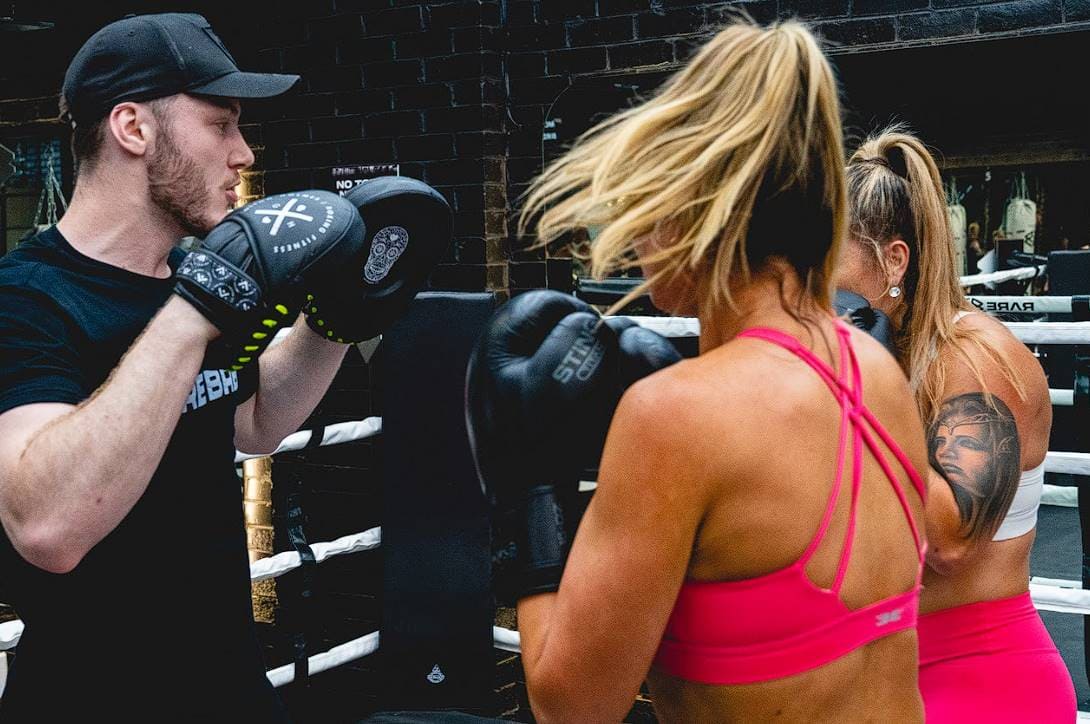
5. LIMIT THE NUMBER OF PUNCHES YOU THROW
In the first piece of advice, I emphasised that landing punches against a boxer adept at defence are a game of numbers. Therefore, you should refrain from continually throwing combinations of five, six, or more punches (although that will work against anyone as long as you have the energy to keep up the work rate and the chin to survive heavy counters).
Every single blow ought to have some hidden significance. For instance, the first punch should be used to build up the second punch, which should be used to split the guard, and the third blow should be used to land flush and ideally result in a knockout.
6. GO TO THE BODY
What moves should you make when you go up against a boxer with a tiny head but quick feet?
If you answer, "Bang him to the body till that obnoxious sucker slows down!!!" you deserve some praise.
There is a limit to how far headhunting can take you, and one of the characteristics of a successful boxer is the ability to incorporate body blows into their punch selection. Not only are they simpler to land because the torso is a wider target than the head, but they also bring unpredictability, and if they are landed in good locations, they hurt like hell.
When you're in the middle of a boxing combination, the rear uppercut or the lead hook to the body from the middle range are two of the best body shots you can land. But, of course, that succession also provides for a nice combo all by itself.
7. CONTROL YOUR POWER
When you throw a powerful punch, you leave yourself more vulnerable with everyone you land. You will lose some of your equilibrium and defence in exchange for the opportunity to deal a damaging blow. When it comes down to it, you'll find it takes you longer to bring your hand back to defend yourself and throw another punch after the first one.
If you want to throw a fast and powerful combination, the power in the combo should come from an ascent, at the very least. In practice, the initial punch will be the weakest, and the final punch should be the strongest.
If you were to throw every punch at your maximum capacity, it would not be easy to make a natural progression in speed, power, and timing. However, using this strategy makes it possible to do so.
8. CONTROL THE DISTANCE
The ability to regulate distance is one of the most important factors in determining whether or not a punch hits and, if it does, how forcefully it does so. To come into punching range, you first need to close the space between you and your opponent, and then you need to do some mental computation to determine which punches will be the most effective at that distance.
It may appear simple, and against some competitors, it is; however, if you are up against a mover who has a longer reach and faster hand speed than you do, it may be an absolute headache to deal with them.
It is another compelling argument favouring adhering to controlling your power advice number 7. You can close the space between you and your opponent by throwing quick and light fake punches, and once you are in range, you can follow up with an appropriate combination of blows.
9. START OFF EACH COMBINATION WITH A JAB
This advice is not a rule of thumb, but it is more like a guideline and excellent. For example, starting a combo with a jab can help you hit subsequent blows by functioning as a measuring stick, a laser guide, or deceit. These are all effective tools against any opponent but are especially useful against defensive-minded fighters.
Performing the same thing leads to predictability, and the goal of any great counterpuncher is predictable behaviour during a boxing battle. As a result, it's a good idea to occasionally switch up the beginning of combinations by throwing in some lead punches.
It is important to remember that throwing a jab at close range is risky since you cannot get your full length on it, it does not cause much harm, and it is simple to counter at such a short distance. In this scenario, beginning a combination with a lead hook or a rear uppercut might be more effective than a jab or cross.
Tips for Throwing Boxing Combinations
- Regarding combinations, those just beginning to participate in the sport is likelier to make blunders. The following are helpful hints that will ensure that you are punching combinations and that they are delivered precisely every time.
- The most common error when throwing combos is failing to realise that not every punch needs to be thrown at one hundred per cent. For example, it is common practice for the final blow in a combination to be the only one intended to be delivered with any significant force. You need to put all your energy into every punch to set yourself up for success, which will significantly affect your body.
- Consider, for illustration, the jab, cross, and left hook combination. You will use the jab and the cross to force the opponent to hide their face, exposing you to a counterattack. They don't need to be prominent figures. After making the necessary adjustments, you can unleash a left hook with maximum force.
- For this combo to function, you must go slightly to the side. Along with it, many other activities need a movement of the body. So be sure to polish your body movement, whether working on boxing combos for a heavy bag or sparring with another boxer.
- It ties up with our first piece of advice: speed is deadly. It takes time and effort to throw punches with a lot of force. A rapid combo will leave your opponent bewildered and open opportunities for you. When getting greater results, you should focus more on speed than power most of the time.
- A common occurrence in boxing is for one boxer to deliver a combination that appears to injure his opponent but cannot knock them out completely. Why is it the case? It is because putting together combinations takes a lot of effort, and there are times when everything is in the tank.
- Please don't focus on the head alone. One of the most common and serious errors that inexperienced people make is that they only go headhunting. When you're not thinking clearly, an instinct makes decisions for you. Take advantage of the situation if they need to cover their body with clothing.
- Changing things up and repeating the same combination will not result in satisfying outcomes. The opponent will eventually realise what's going on and begin to hide. So instead, use various combos to throw off your opponent and keep them guessing.
Conclusion
These striking combos are essential to learning to become a skilled boxer since they will help you analyse, counter, and defeat your opponents. If you want to remain at the top of your game, you must keep expanding the number of combinations available. Several additional well-known combinations are available, in addition to the fact that you can use your ideas and originality to advance in the sport.
Frequenly Asked Questions
What should I consider when creating my own boxing combinations?
Consider factors like stance, footwork, range, timing, feints, setups, and defensive awareness when creating your own combinations. Design them to suit your style, capitalize on strengths, and exploit opponent's weaknesses.
How can I increase the power of my boxing combinations?
Increase combination power by focusing on proper technique, core strength, overall strength training, and incorporating plyometric exercises. Gradual improvement in these areas will enhance the power behind your punches.
How can I maintain my endurance during extended boxing combinations?
Maintain endurance by engaging in cardiovascular training, HIIT workouts, sparring, breathing techniques, and developing mental toughness. These strategies improve stamina, allowing you to sustain extended combinations.
How can I stay calm and composed while executing boxing combinations in a fight?
Stay calm and composed by mentally preparing, practising controlled breathing, sticking to your game plan, focusing on the present moment, and gaining experience through sparring and matches. Confidence and focus help maintain composure.
How do I adjust my boxing combinations based on my opponent's style?
Adjust combinations by analyzing your opponent's style, exploiting weaknesses, using feints and setups, and adjusting range. Adapting to your opponent's strengths and weaknesses increases your chances of success.
